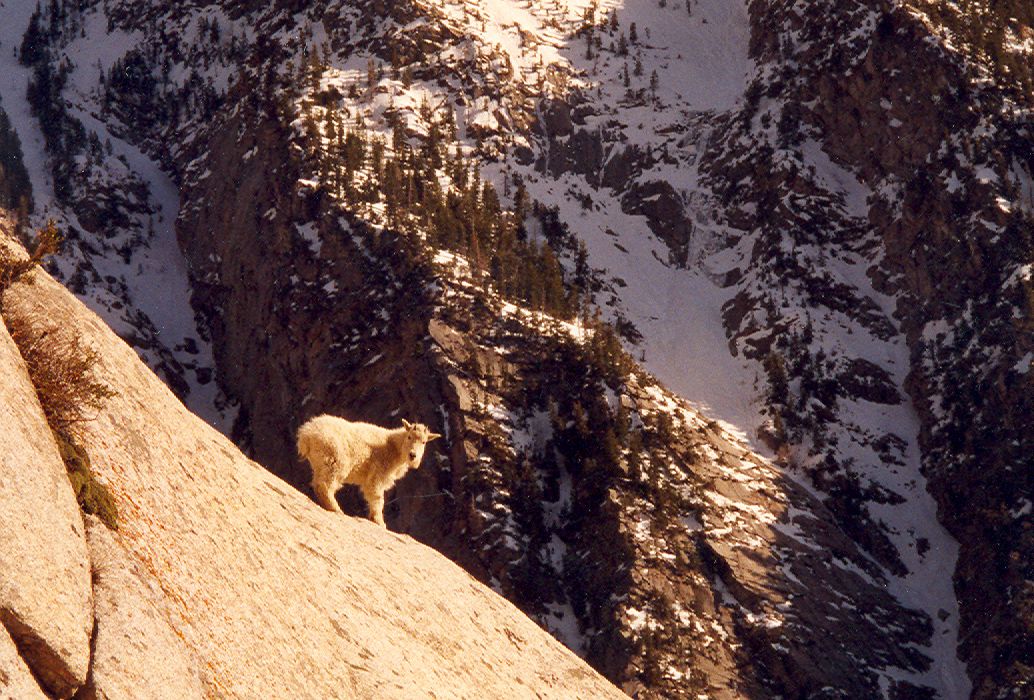Many of the dire scenarios that I have discussed in blog posts going back to 2006 (on Opera) seem to be coalescing right on schedule, and some have substantially compressed the timeframes that I had forecast.
The next three-five years may be as difficult as any since the Great Depression, and many people are in denial about its potential for major long-term disruptions in our lives. You still have time to erect some barricades against the storm, when gasoline is as expensive in the USA as it is in Great Britain (currently about $10 USD per gallon), and food prices rise to the point that massive social disorder occurs.
Assuming that you have a secure home or apartment that is affordable on your present income, you should consider fattening your larder for these troubled times. This includes not only food items, but potable water & water purification products, medicines, First Aid items, hygiene products such as soap, toothpaste, toilet paper, and common disposables such as disinfectant (bleach, Hydrogen Peroxide), paper towels (or a huge rag bag), linens, and so forth.
The goal here is to provide these necessities for your family for a two-year period without resorting to retail outlets or shops. Do not fall for the myth that the government can take care of you in the form of handouts or breadlines. Do not expect to stand safely in line at the grocery store while you compete for scarce items on the shelf. Instead, think of the TV images of Mogadishu (throwing out bags of food from a speeding Jeep, while ducking gunfire), or perhaps Darfur, where you don’t dare to venture outside at all.
In this scenario, your home will literally be your castle and fortress, so think through what you will need to support your continued existence in one place (hopefully, you won’t have to join the migrants that are dumpster-diving, or one of the gangs of ruffians that will roam the streets).
Maybe things won’t get this bad, but hey, you never can tell. Buying and having these things on hand will be a much better investment than that new hybrid car, a growing bank account, or the latest fashion fad. With this in mind, here are some fun facts about the shelf life of these items that, while relatively inexpensive now, may become worth their weight in Gold. I am not the author of the following table. It was in my miscellaneous papers, and I can’t provide proper attribution.
Average Shelf Life
|
Below is a chart to help you determine the shelf life of food stored in air-tight containers at constant temperature of 70 degrees. All of the following products will store proportionally longer at cooler temperatures if kept at lower storage temperatures. Shelf life of 30+ years is perfectly feasible for many products!
|
|
|
Years
|
|
Years
|
|
Years
|
|
Apples
|
30
|
|
|
|
|
|
Adzuki Beans
|
8 – 10
|
Gluten
|
5
|
Powder Eggs
|
15
|
|
Alfalfa Seeds
|
8
|
Granola
|
5
|
Powder Milk
|
20
|
|
All Purpose Flour
|
15
|
Lima/Red Beans
|
15
|
Quinoa
|
8
|
|
Bakers Flour
|
15
|
Groats
|
8
|
Refried Beans
|
5
|
|
Barley
|
10
|
Hard Red Wheat
|
25 – 30
|
Ribbons
|
8 – 15
|
|
Black Turtle Beans
|
15 – 20
|
Hard White Wheat
|
25 – 30
|
Rolled Oats
|
30
|
|
Blackeye Beans
|
15 -20
|
Honey, Salt and Sugar
|
Indefinitely
|
Rye
|
8
|
|
Broccoli
|
8 – 10
|
Hulled Oats
|
30
|
Small Red Beans
|
8 – 10
|
|
Brown Rice
|
6
|
Kamut
|
8 – 12
|
Soft wheat
|
25
|
|
Buckwheat
|
15
|
Kidney Beans
|
20
|
Soy Beans
|
8 – 10
|
|
Butter/margarine Powder
|
15
|
Lentils
|
20
|
Spaghetti
|
15 -20
|
|
Cabbage
|
8 – 10
|
Lima Beans
|
20
|
Special bakery wheat
|
25
|
|
Carrots
|
8 – 10
|
Macaroni
|
15 – 20
|
Spelt
|
12
|
|
Celery
|
8 – 10
|
Millet
|
8 – 12
|
Sprouting Seeds
|
4-5
|
|
Cheese Powder
|
15
|
Mixes
|
5 – 10
|
Triticale
|
8 – 12
|
|
Cocoa Powder
|
15
|
Morning Moo
|
10
|
TVP
|
15 – 20
|
|
Corn
|
8 – 12
|
Mung Beans
|
8 – 10
|
Unbleached Flour
|
5
|
|
Cornmeal
|
5
|
Noodles
|
8 – 10
|
Wheat flakes
|
15
|
|
Cracked wheat
|
25
|
Onions
|
8 – 12
|
Whey Powder
|
15
|
|
Durham Wheat
|
8 – 12
|
Peanut Butter Powder
|
4 – 5
|
White Flour
|
5
|
|
Flax
|
8 – 12
|
Pearled Oats
|
10
|
White Rice
|
8 – 10
|
|
Fruit
|
5
|
Peppers
|
8 – 12
|
Whole Wheat Flour
|
5
|
|
Garbanzo Beans
|
15 – 20
|
Pink Beans
|
20 – 30
|
Yeast
|
2
|
|
Garden Seeds
|
4
|
Pinto Beans
|
20 – 30
|
|
|
|
Germade
|
5
|
Potatoes (flakes, slices, dices)
|
20 – 30
|
|
|
|
Predicting actual shelf life of dehydrated foods is not an exact science, however there have been many studies done. In addition to the above average shelf life of food stored at a constant 70 degrees, you can dramatically increase your life expectancy by lowering the constant temperature. It is possible to double, triple or even quadruple the shelf life by lowering the temperature proportionally.
|
A year supply of basic food storage for one person (400 lb wheat, 60 lb dry beans, 60 lb sugar, 16 lb powdered milk, 10 qt cooking oil, 8 lb salt) provides adequate calories but is lacking in calcium as well as vitamins A, C, B12, and E. Vitamins A and C can be found in canned or bottled fruits and vegetables as well as in some fruit drink mixes. Most vitamin C is destroyed during dehydration of fruits and vegetables, but some vitamin A remains. Good sources of vitamin A include canned pumpkin and dehydrated carrots. Vitamin B12 comes from animal sources and can be found in canned meats and jerky. Calcium comes mainly from dairy products such as powdered milk, hot cocoa mix, and pudding mix (containing dried milk). Vitamin E is found in fats and oils and can be found in nuts such as sunflower seeds and almonds.
Fresh water can be stored for considerable periods (measured in years) if you add about a teaspoon of bleach to every gallon of water. Worse case, you can boil the stuff and get rid of the flat taste by pouring it from one container to another a few times after boiling. 55 gallon plastic, non-evaporative storage containers can be purchased new, for about $30 USD. You will use far more water than you imagine in the course of daily living. Plan on storing at least 200-300 gallons.
Since the entire idea of a food storage program is that it should be available for you and yours in times of need, it is important to understand the conditions that can affect the edibles stored in your pantry.
A storage program is only as good as the quality of the food that goes into it. It cannot get any better than what originally went in, but it can certainly get worse. In the fullness of time, all stored foods will degrade in nutrients and palatability until they reach the inevitable end where even the dog won’t eat them. It’s because of this eventuality that every article, book, and teacher concerned with putting food by gives the same advice: Date all food containers and rotate, Rotate, ROTATE.
The first food in should be the first food out. This concept is often shortened to the acronym FIFO. This will allow you to also store the foods you like to eat (with a limited shelf-life) as well as the foods that merely keep you alive. And don’t forget the yeast and baking powder.
Ideally, your storage location should have a humidity level of 15% or less, but unless you live in the desert it’s not likely you’ll be able to achieve this. Regardless, moisture is not good for your dry stored edibles so you want to minimize it as much as possible. This can be done by several methods. The first is to keep the area air-conditioned and/or dehumidified during the humid times of the year. The second is to use packaging impervious to moisture and then to deal with the moisture trapped inside. If you are able, there’s no reason not to use both.
All containers should be kept off the floor and out of direct contact from exterior walls to reduce the chances of condensation brought on by temperature differences between the container and the surface it’s resting against.
So, the storage rules are:
First In, First Out (FIFO) means rotating your storage
Cooler is better
Drier is better
Less oxygen exposure means more shelf life, so make sure the containers are SEALED.
Don’t shed light on your food.
Think of rotating your food storage as paying your food insurance premiums — slacking off on rotation cuts back on your coverage. Is your food insurance up to date?
Are you ready for unexpected natural disasters like this?





